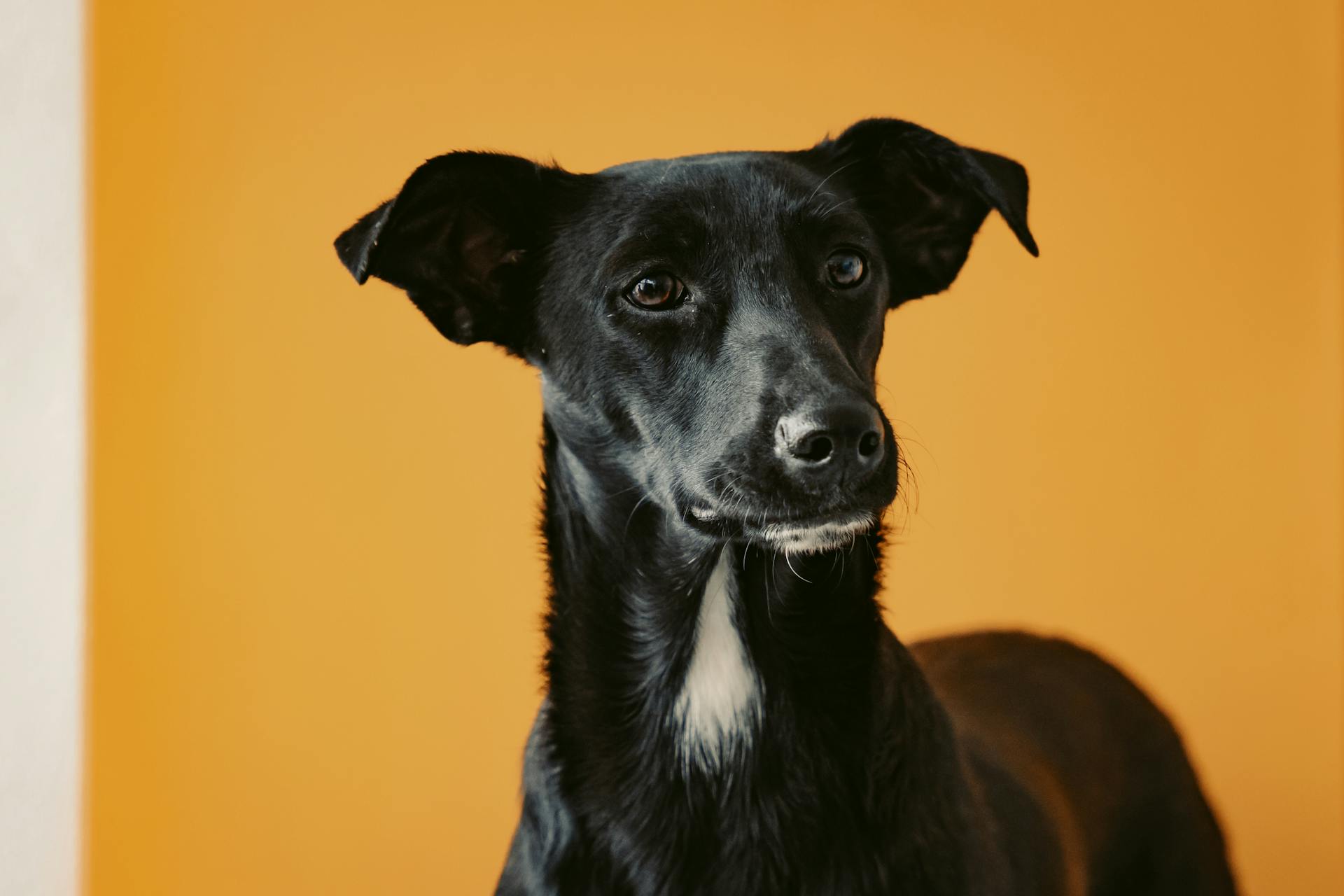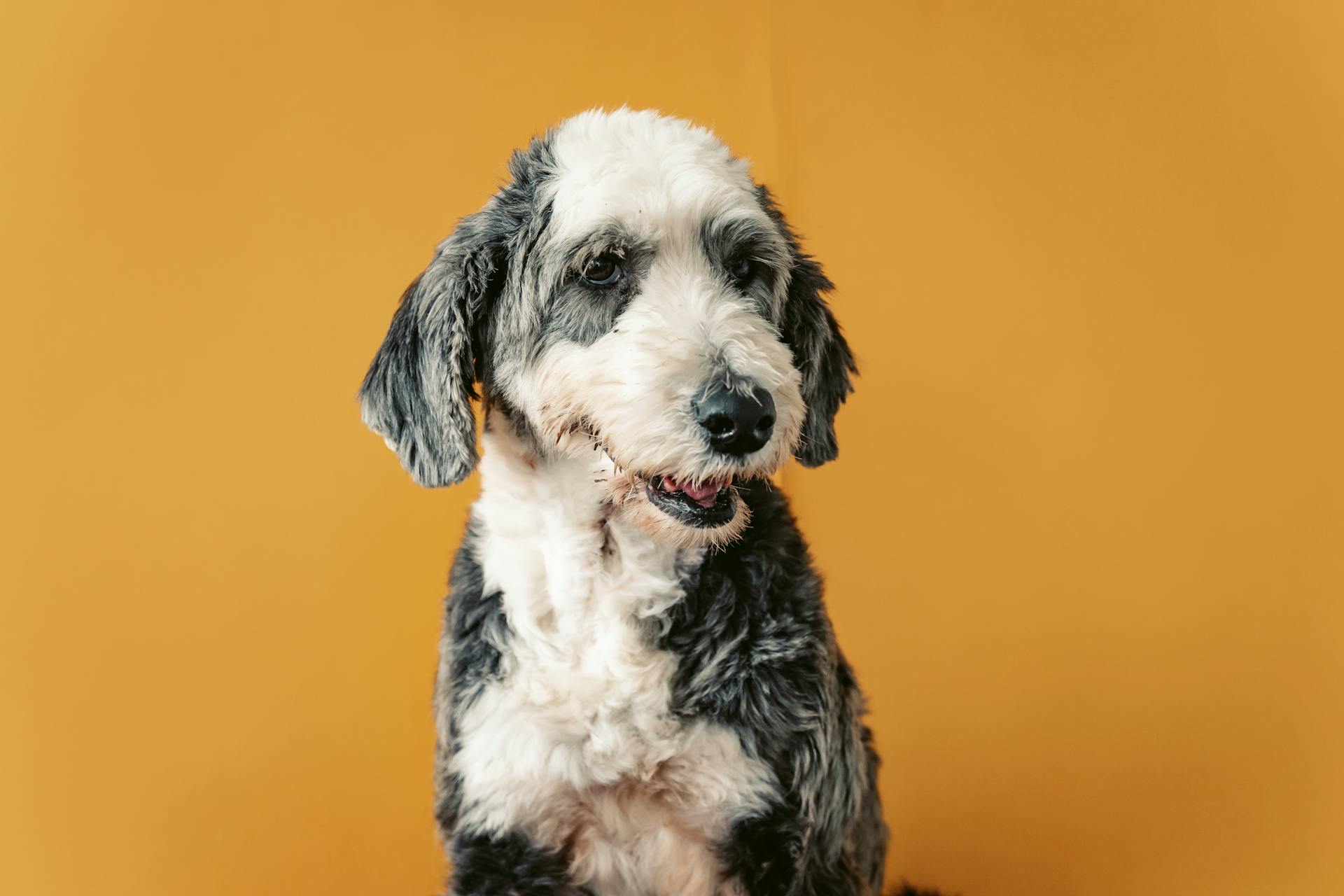
Introducing a dog to a new person can be a daunting task, but with patience and a gentle approach, you can help build trust between your furry friend and the newcomer.
Start by keeping the introduction in a neutral area, such as a quiet room or outdoor space, away from your dog's regular living areas. This will help prevent any territorial behavior.
It's essential to keep the new person calm and relaxed, as dogs can pick up on their emotions. A calm demeanor can help your dog feel more at ease.
Check this out: Dog Diaper Training
Preparation
Before introducing your dog to a new person, it's essential to prepare your dog for the encounter. This can be done by practicing basic obedience commands such as "sit", "stay", and "leave it" in a calm and distraction-free environment.
By doing so, you can help your dog feel more confident and in control, reducing the likelihood of anxiety or aggression. A well-trained dog is more likely to respond positively to new people.
Choose a quiet and neutral location for the introduction, such as a park or a friend's home, to minimize distractions and stress. This will help your dog feel more at ease and focused on the new person.
Remember, a calm and relaxed dog is more receptive to new experiences and people.
The Introduction
Introducing a shy or fearful dog to new people should be a slow process.
This approach helps your dog feel comfortable and secure in the presence of strangers.
Let your dog make the first move, allowing them to signal that contact is acceptable before the new person approaches.
This means the new person should wait for your dog to initiate contact, rather than rushing in to pet or touch them.
Tips and Reminders
To make introductions smoother, it's essential to keep the new person calm and relaxed. This can be achieved by having them sit down and engaging them in conversation before introducing the dog.
Always reward your dog for calm behavior around the new person, as this will help them associate the person with positive experiences. For example, you can give them a treat for remaining calm.
Keep the initial introduction brief and in a controlled environment, such as a quiet room, to prevent overwhelming your dog.
Patience Is Key
Patience is key when it comes to helping your dog feel confident around new people. This can take time, especially if your dog is shy or fearful.
The critical socialization period for puppies is between 3 and 12 weeks of age, so it's essential to be patient and not rush the process. This will help prevent worsening your dog's feelings of fear or shyness.
You should never rush this process because it may only worsen your dog’s feelings of fear or shyness. Give your dog time to adjust to their new environment and the people in it.
Recommended read: How Do You Have a Dog and Work Full Time

Temper your expectations and remember that life with you is a different experience for your new companion. Give them time to adjust, and you'll soon find out that you've made a friend for life.
No one will ever greet you with as much enthusiasm or provide you with as much unqualified love and loyalty as your dog will.
A different take: Will Hawks Attack Small Dogs
Use Positive Reinforcement
Positive reinforcement is a powerful tool to encourage good behavior. By rewarding your dog with treats or praise when they display confident behavior, you create a positive association.
Reward your dog immediately after they exhibit confident behavior, so they can connect the action with the reward. This helps them understand what they're doing right.
Use plenty of positive reinforcement during the introduction process, as this will help your dog feel more at ease around new dogs.
Getting Started
Before introducing your dog to a new person, make sure you've prepared a safe space for the meeting to take place.
It's essential to choose a neutral location, such as a quiet room or outdoor area, where your dog is less likely to feel anxious or territorial.
Pick a time when your dog is well-rested and not too hungry or thirsty, as this can affect their mood and behavior.
Start by keeping your dog on a leash or in a separate room until you're sure they're comfortable with the new person's presence.
This will allow your dog to become familiar with the new person's scent and sounds without feeling overwhelmed.
Sources
- https://www.care.com/c/11-tips-on-how-to-introduce-dogs-to-new-peopl/
- https://www.humanesociety.org/resources/how-make-your-new-dog-feel-comfortable-your-home
- https://indoorpet.osu.edu/dogs/new_additions_dogs/dog-dog-intro
- https://www.luckydoganimalrescue.org/articles/tips-introducing-new-dog-your-household-pack
- https://vcahospitals.com/know-your-pet/dog-behavior-and-training---introducing-a-new-dog-to-your-family-dog
Featured Images: pexels.com


